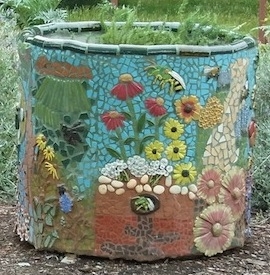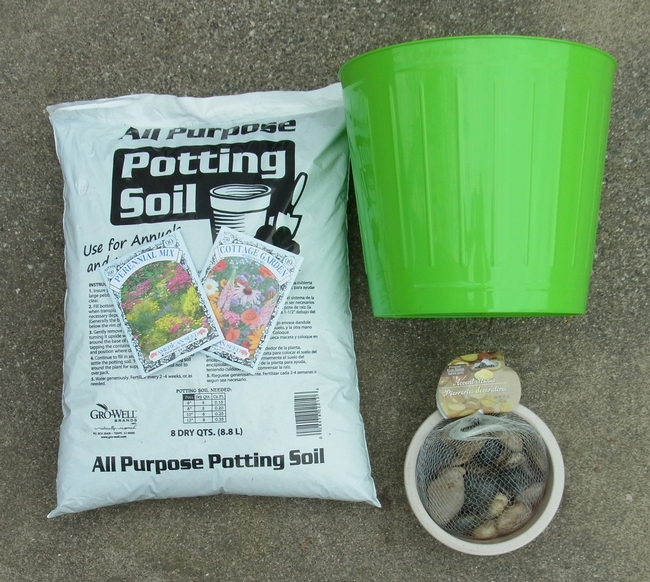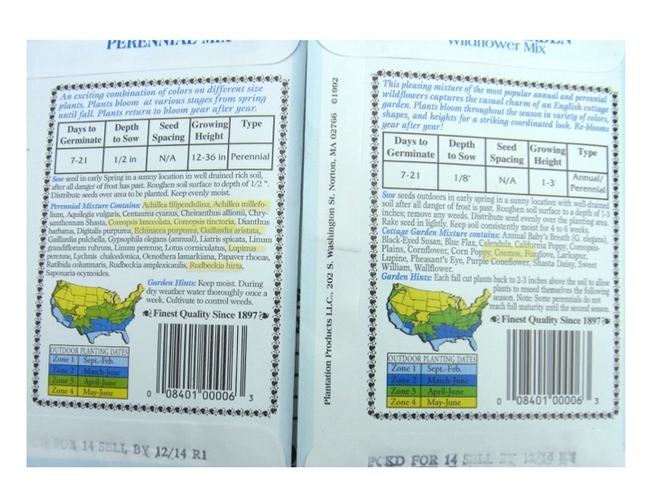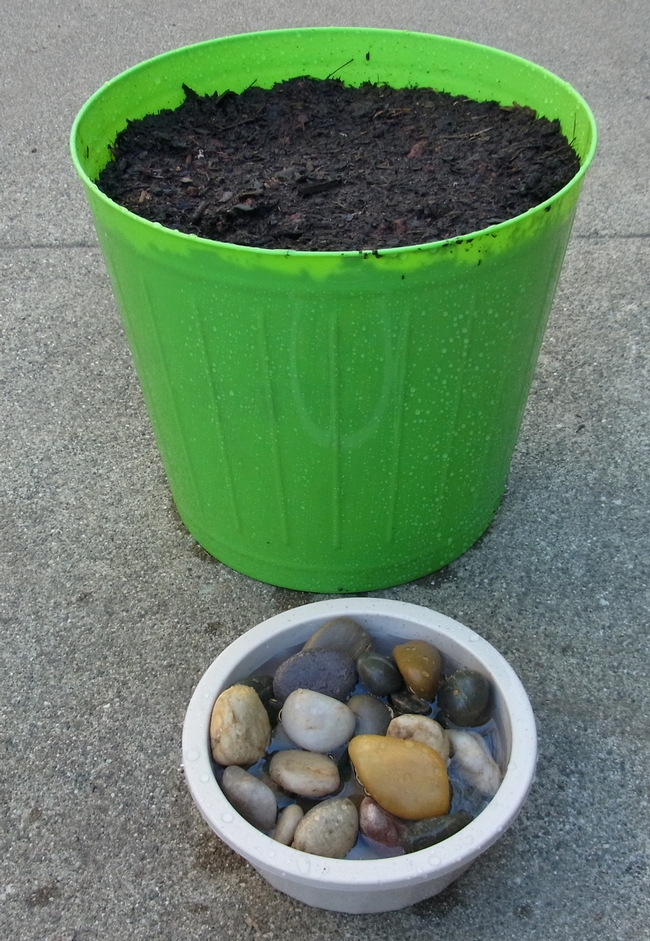Part of our mission at the Honey Bee Haven is to inspire the planting of other bee gardens. But what are apartment dwellers or others without the resources for gardens to do? Plant a container garden!
The concrete planters at the Haven were designed with this idea in mind. Executed by students in the Department of Entomology and Nematology's ENT 001 class (part of the campus Art/Science Fusion Program), they depict bee plants that grow well in pots. To reinforce the message, some of these plants are growing in the containers. Two examples are blanket flower (Gaillardia x grandiflora) and black-eyed Susan (Rudbeckia fulgida). 
Planting a container bee garden at home is easy. Using supplies from a local dollar store, I put together a bee garden for less than $5. This includes a container, a bag of potting soil, two packs of seed, and a small bowl and stones to create a water source.
Will this work? If this small container has the only flowers within sight, then bees probably won't find it. If you're in an area with extensive bee-friendly landscaping, or if all the apartments in a complex plant these gardens, then I would expect them to be used by bees. I'll post updates throughout the summer on what's blooming in the Five Dollar Bee Garden and what bees I see on the flowers.
Here's how to do it:
Supplies: potting soil, container (I purchased a 1 ½ gallon wastebasket), 2 packs of seed, small pet bowl, and a bag of stones. The seeds were $0.25 each and all other supplies were $1 each.

Some of the good bee plants in the two seed mixes I purchased are yarrow (Achillea millefolium), coreopsis (Coreopsis lanceolata), cosmos (Cosmos bipinnatus), coneflower (Echinacea purpurea), blanket flower (Gaillardia aristata), lupine (Lupinus perrenis), black-eyed Susan (Rudbeckia hirta).
Bee water source: Along with pollen and nectar, bees need to drink! A shallow dish with stones that bees can stand on to access water is perfect.
